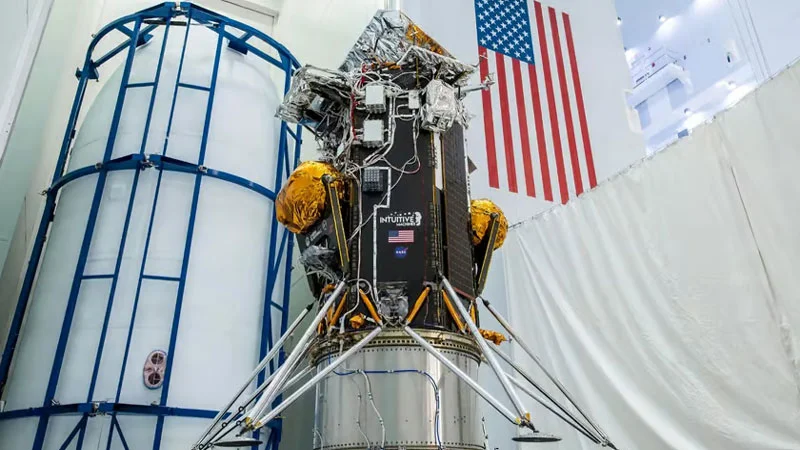The Nova-C lunar lander of the Houston-based Intuitive Machines company is expected to be sent into space on February 14. NASA engineers installed experimental fuel level sensors in cryogenic fuel module tanks. This technology has not yet been tested on long flights with acceleration and weightlessness. The innovation will allow a more accurate calculation of the fuel remaining in tanks, which will improve the planning of flight missions.
On Earth, in conditions of normal gravity, fuel accumulates at the bottom of tanks, and determining its level does not require many simple methods, from mechanical (buoys, etc.) to electronic. In conditions of weightlessness and during movement with acceleration, fuel can spread along the walls or accumulate in one place. The usual methods of measuring its level will give nothing but confusion. That’s why NASA created a sensor to measure fuel mass – RFMG (radio frequency mass meter).
The sensor “illuminates” the volume of the fuel tank with radio waves and detects resonance responses that depend on the thickness of the fuel layer. Then the result obtained is compared with the database, and then the program calculates the approximate amount of remaining fuel. Developers claim that the measurement error does not exceed a few percent. NASA has already tested the new system in free-falling aircraft and on the ISS. As part of the Nova-C mission, testing will be carried out in its entirety from its beginning on Earth to its landing on the Moon.
Without the use of such sensors, the remaining amount of fuel is calculated based on the estimated fuel consumption during engine operation. However, cryogenic fuel in tanks has a tendency to boil during the simple storage process, causing a large error in the traditional residue calculation method. Although Japan’s ispace HAKUTO-R module appears to have run out of fuel to land on the satellite, this is largely irrelevant for lunar missions. But if we talk about flights deep into the solar system, then knowing the exact fuel reserves will much better help plan the mission.













